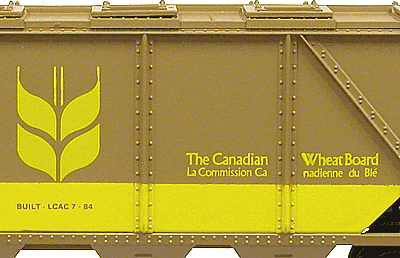|
The marketing agency collects wheat from across Western Canada into a
single pool, then negotiates the market price with buyers. It has
allowed less efficient farmers to earn higher income, courtesy of their
more efficient and productive counterparts, who wish to market their
produce independently of the Wheat Board. Some farmers have expressed
the fear that they’ll be ruined without the Wheat Board and will have to
sell their farms. They have advised the public that farmers have taken a
democratic vote and that 62% of them voted in favor of retaining the
government-run marketing agency.
However, a story leaked out suggesting that the 38% of farmers who voted
to abolish the Wheat Board were also major producers who accounted for
over 60% of Western Canadian wheat and grain production. It appears that
productive farmers were cross-subsidizing their less efficient
counterparts, for whom the Wheat Board provided a lifeline.
 Several Western farmers had earlier severed ties with the Wheat Board
and joined the ranks of farmers who grew lentils, chickpeas and other
legumes. The legume farmers independently market their produce to
domestic and overseas markets. About two years ago, weather conditions
in India severely restricted their legume crop, especially the prized
little red lentils. India’s demand for the little red lentils soared
just as a bumper crop of Canadian grown red lentils was ready for
market. Assisted by computer telecommunications, the lentil farmers
found eager customers in India who were willing to negotiate prices.
Shiploads of lentils grown in Western Canada then began arriving at
Indian maritime ports.
Several Western farmers had earlier severed ties with the Wheat Board
and joined the ranks of farmers who grew lentils, chickpeas and other
legumes. The legume farmers independently market their produce to
domestic and overseas markets. About two years ago, weather conditions
in India severely restricted their legume crop, especially the prized
little red lentils. India’s demand for the little red lentils soared
just as a bumper crop of Canadian grown red lentils was ready for
market. Assisted by computer telecommunications, the lentil farmers
found eager customers in India who were willing to negotiate prices.
Shiploads of lentils grown in Western Canada then began arriving at
Indian maritime ports.
The minority of wheat farmers who account for the majority of Western
Canadian wheat production wish to market their produce as do the legume
farmers. It has become apparent that a free-market approach in grain
marketing would cause turmoil for the majority of wheat farmers. Some
have complained of being too old to switch to a different crop. Others
have said that they may sell their farms to their more productive
neighbor farmers. However, there is the unexplored possibility of
free-market entrepreneurs entering the Western Canadian agricultural
sector with ideas and concepts that could make smaller farms more
efficient and more productive.
|

